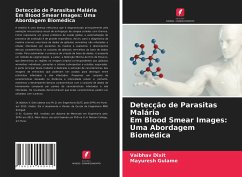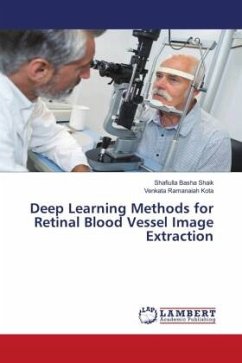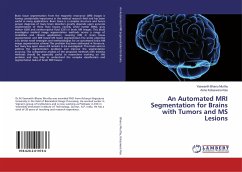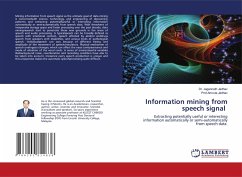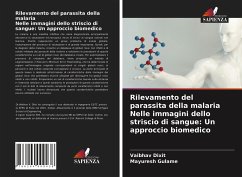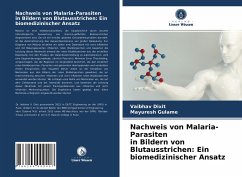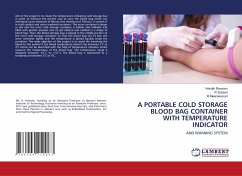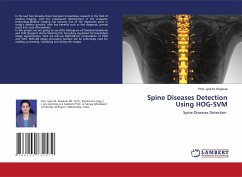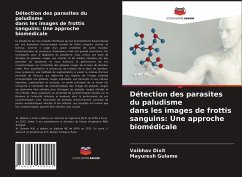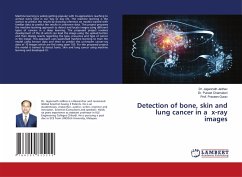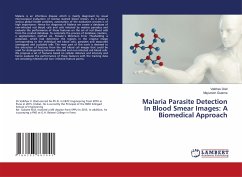
Malaria Parasite Detection In Blood Smear Images: A Biomedical Approach
Versandkostenfrei!
Versandfertig in 6-10 Tagen
27,99 €
inkl. MwSt.

PAYBACK Punkte
14 °P sammeln!
Malaria is an infectious disease which is mainly diagnosed by visual microscopical evaluation of Giemsa stained blood smears. As it poses a serious global health problem, automation of the evaluation process is of high importance. Hence for diagnosis of Malaria we create a database of non-infected red blood cells and cells infected by malaria parasites and evaluate the performance of these features on the set of red blood cells from the created database. To automate the process of database creation, a segmentation method viz, Poisson's Minimum Error Thesholding is proposed, which had determine...
Malaria is an infectious disease which is mainly diagnosed by visual microscopical evaluation of Giemsa stained blood smears. As it poses a serious global health problem, automation of the evaluation process is of high importance. Hence for diagnosis of Malaria we create a database of non-infected red blood cells and cells infected by malaria parasites and evaluate the performance of these features on the set of red blood cells from the created database. To automate the process of database creation, a segmentation method viz, Poisson's Minimum Error Thesholding is proposed, which had determine the regions in the original image corresponding to the individual red blood cells, parasites and separated overlapped and occluded cells. The main part of this work is devoted to the extraction of features from the red blood cell images that could be used for distinguishing between infected and non-infected red blood cells. We propose a set of features based on cellular distance and intensity and hence evaluate the performance of these features with the training data set consisting infected and non- infected feature points.
Malaria is an infectious disease which is mainly diagnosed by visual microscopical evaluation of Giemsa stained blood smears. As it poses a serious global health problem, automation of the evaluation process is of high importance. Hence for diagnosis of Malaria we create a database of non-infected red blood cells and cells infected by malaria parasites and evaluate the performance of these features on the set of red blood cells from the created database. To automate the process of database creation, a segmentation method viz, Poisson's Minimum Error Thesholding is proposed, which had determine the regions in the original image corresponding to the individual red blood cells, parasites and separated overlapped and occluded cells. The main part of this work is devoted to the extraction of features from the red blood cell images that could be used for distinguishing between infected and non-infected red blood cells. We propose a set of features based on cellular distance and intensity and hence evaluate the performance of these features with the training data set consisting infected and non- infected feature points.
Malaria is an infectious disease which is mainly diagnosed by visual microscopical evaluation of Giemsa stained blood smears. As it poses a serious global health problem, automation of the evaluation process is of high importance. Hence for diagnosis of Malaria we create a database of non-infected red blood cells and cells infected by malaria parasites and evaluate the performance of these features on the set of red blood cells from the created database. To automate the process of database creation, a segmentation method viz, Poisson's Minimum Error Thesholding is proposed, which had determine the regions in the original image corresponding to the individual red blood cells, parasites and separated overlapped and occluded cells. The main part of this work is devoted to the extraction of features from the red blood cell images that could be used for distinguishing between infected and non-infected red blood cells. We propose a set of features based on cellular distance and intensity and hence evaluate the performance of these features with the training data set consisting infected and non- infected feature points.



